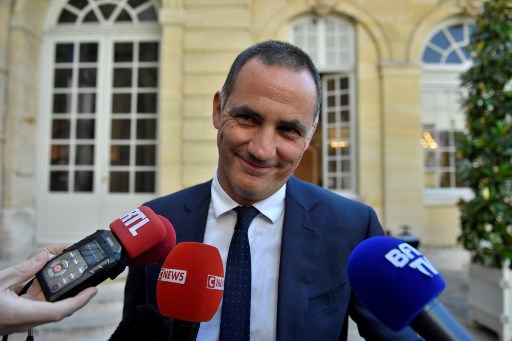The Mediterranean territory, famed for its beaches and as the birthplace of Napoleon Bonaparte, was once a hotbed of anti-French militancy which led to thousands of bombings from the 1970s to early 2000s.
But since 2014, when local National Liberation Front of Corsica announced a ceasefire, French state infrastructure and the luxury holiday homes owned by wealthy mainlanders – still seen as “colonisers” by some locals – have been largely safe.
READ ALSO Why Corsica is not the new Catalonia

Gilles Simeoni, head of the Corsican regional government, has warned of a tense atmosphere on the island. Photo: AFP
After a series of incidents in recent weeks, Gilles Simeoni, the nationalist head of Corsican regional government, warned of a “tense atmosphere” on the island and “the resurgence of the logic of conflict”.
“It's our common duty, in Corsica and in Paris, to stop this dreadful spiral and to open a real dialogue,” he said on Monday, three days before French President Emmanuel Macron visits.
Improvised explosive devices were found earlier on Monday outside two tax offices in the town of Bastia, leading to evacuations and bomb disposal teams being scrambled in scenes that recalled past attacks on symbols of the French state.
At the weekend, a holiday home in Sagone, a village above a picturesque bay of turquoise water on the west of the island, was attacked, while another partly-built villa went up in flames in Venzolasca on the eastern coast.
In early March, on the day Macron's visit was announced, six homes were bombed, causing no injuries but lots of structural damage.
For the moment, no group has claimed the violence and experts warn about drawing conclusions.
“We're in the dark,” academic Thierry Dominici at the University of Bordeaux in western France told AFP.
“Either it's violence led by different people and it's a new form of protest. Or it's the action of isolated individuals who want a return of the (nationalist) violence,” he said.
Fears of a new cycle of political unrest are linked to a tense standoff between Macron and the island's nationalist leader Simeoni and his more radical coalition partner in the Corsican assembly, Jean-Guy Talamoni.
Their parties – Femu a Corsica (Let's Make Corsica) and pro-independence Corsica Libera (Free Corsica) – won 45.36 per cent in regional elections in December 2017 and came to power promising greater autonomy.
They have formulated a series of demands, including an amnesty for prisoners jailed for separatist violence, expanded use of the Corsican language and measures to keep wealthy mainlanders out of the local property market.
But they have run into resistance from Macron, who has offered greater institutional autonomy and support for the local dialect, but is unwilling to give too much ground out of fear of encouraging other separatists in France.
In an interview on Tuesday, Macron said he and Simeoni shared a responsibility to “do everything to ensure that the page of violence has been turned for good”.
“I think that you can defend the Corsican identity and fully respect the nation and its values,” he added.
But Simeoni will snub a public meeting with Macron on Thursday which has been organised as part of the French leader's “Great National Debate,” a months-long exercise to discuss the demands of the “yellow vest” protest movement.
Talamoni too is set to stay away and the ruling coalition has called for a half-day strike — called “dead island” — to coincide with Macron's arrival on Thursday.
Dominici says that despite the standoff and violence there is evidence that the nationalists are making progress as a non-violent political force having given up the armed fight.
While highly political demands such as the freeing of prisoners have gone nowhere, Macron has offered to add an article on Corsica to the constitution which would recognise its “specificity” and allow the regional assembly to adapt some national legislation.
“On their (nationalists') institutional demands, there has been some progress,” he said.



 Please whitelist us to continue reading.
Please whitelist us to continue reading.
Member comments